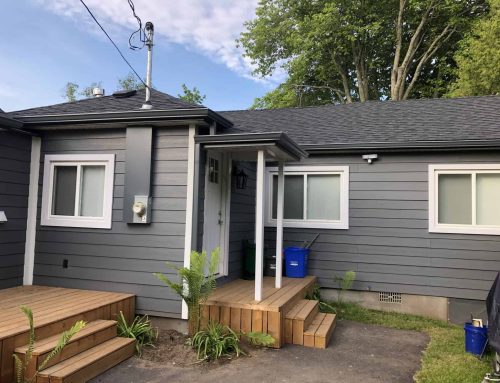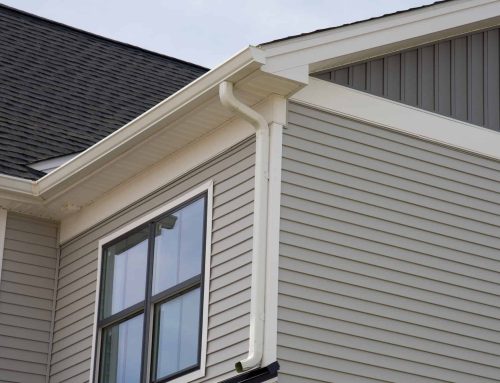Engineered wood siding has emerged as a popular alternative to traditional materials, offering the authentic appearance of natural wood with enhanced durability and performance characteristics designed to address common maintenance challenges. However, the question of whether this material performs adequately in Toronto’s demanding climate requires careful consideration of both its benefits and potential limitations in the context of the region’s specific weather patterns and moisture conditions.
Toronto’s climate presents unique challenges for exterior siding materials through extreme seasonal temperature variations, frequent freeze-thaw cycles, high humidity levels during summer months, and substantial precipitation throughout the year. The city’s position near Lake Ontario creates additional moisture exposure through lake-effect weather patterns, while urban microclimates can create localized conditions that intensify material stress. Understanding how engineered wood siding performs under these specific conditions is essential for homeowners considering this increasingly common siding option for their Greater Toronto Area properties, where material selection can significantly impact both immediate costs and long-term maintenance requirements.
Understanding Engineered Wood Siding Composition and Technology
Engineered wood siding represents a manufactured product designed to replicate natural wood’s appearance while addressing some of its inherent weaknesses through controlled manufacturing processes and protective treatments that enhance durability and weather resistance.
Manufacturing Process and Material Composition
Engineered wood siding typically consists of wood fibers, strands, or particles combined with resins and wax binders that create a dense, uniform material with consistent properties throughout. This controlled manufacturing process eliminates natural wood’s variations, knots, and grain irregularities that can create weak points vulnerable to weather damage.
Advanced binding technologies create strong molecular bonds between wood particles and synthetic resins, resulting in a material that resists splitting, warping, and checking that commonly affect solid wood siding in Toronto’s variable climate conditions.
Dimensional stability improvements through engineering processes help the material resist expansion and contraction caused by moisture and temperature fluctuations, reducing the movement problems that can compromise solid wood siding installations over time.
Quality control during manufacturing ensures consistent product characteristics including thickness, density, and protective coating application that provide more predictable performance compared to natural wood’s inherent variability.
Protective Coating Systems
Factory-applied primer and finish coatings provide initial weather protection that must be maintained through proper installation and ongoing maintenance to ensure long-term performance in Toronto’s challenging climate conditions.
Moisture barrier treatments incorporated during manufacturing help resist water penetration that can cause swelling, rot, and delamination in engineered wood products exposed to Toronto’s frequent precipitation and high humidity conditions.
UV-resistant topcoats protect against sun damage and color fading during Toronto’s summer months when intense sunlight can degrade unprotected surfaces and compromise both appearance and protective capabilities.
Proprietary coating systems from premium manufacturers often include multiple layers of protection designed to work together, providing comprehensive defense against moisture, UV exposure, and biological growth that can affect siding performance.
Product Variations and Grade Options
Premium engineered wood products incorporate enhanced moisture resistance and thicker protective coatings that provide better performance in challenging climates like Toronto’s, while economy grades may sacrifice some durability for lower initial costs.
Thickness variations affect both appearance and performance, with thicker products generally providing better durability and more authentic wood-like depth and shadow lines that enhance visual appeal.
Profile options include lap siding, vertical panels, shakes, and shingles that replicate traditional wood styles while providing modern performance characteristics suited to various architectural applications throughout Toronto’s diverse neighborhoods.
Trim and accessory products from the same manufacturers ensure system compatibility while providing cohesive appearances that integrate well with overall home design and architectural character.

Engineered Wood vs Vinyl Siding
Benefits of Engineered Wood Siding for Toronto Applications
Engineered wood siding offers several advantages that make it attractive for Toronto homeowners seeking wood’s aesthetic appeal without accepting all of natural wood’s maintenance challenges and performance limitations.
Authentic Wood Appearance at Lower Cost
Visual authenticity of quality engineered wood products closely replicates natural wood grain patterns and textures, providing premium appearances that enhance curb appeal and property values throughout Toronto’s established neighborhoods where traditional materials are valued.
Cost advantages compared to solid wood cedar or redwood siding can be substantial, with engineered products typically costing 30-50% less than premium natural wood options while providing comparable aesthetic results and potentially superior weather resistance.
Architectural versatility allows engineered wood siding to complement both traditional and contemporary home styles common throughout the GTA, from Victorian properties in Toronto’s heritage districts to modern designs in newer suburban developments.
Color consistency from factory finishing ensures uniform appearances without the natural color variations found in solid wood, creating clean, professional results that enhance property presentation and market appeal.
Enhanced Dimensional Stability
Reduced warping and cupping compared to solid wood results from engineering processes that minimize moisture-related movement, helping maintain straight, flat surfaces throughout Toronto’s humidity variations and seasonal moisture cycles.
Resistance to splitting and checking prevents the surface cracks that commonly develop in solid wood siding exposed to Toronto’s freeze-thaw cycles and UV radiation, maintaining weather protection and appearance over extended periods.
Consistent reveal and alignment throughout installations result from uniform product dimensions that don’t vary like natural wood, creating professional appearances that remain stable throughout the product’s service life.
Thermal movement characteristics are more predictable than natural wood, allowing for proper expansion gap planning that prevents buckling during Toronto’s extreme temperature variations from winter cold to summer heat.
Improved Resistance to Common Problems
Insect resistance through manufacturing processes and treatments makes engineered wood less attractive to carpenter ants, termites, and other wood-boring insects that can damage natural wood siding in Toronto’s urban and suburban environments.
Rot resistance from moisture barriers and preservative treatments provides better protection against decay compared to untreated natural wood, though proper installation and maintenance remain essential for long-term performance in Toronto’s moisture-prone climate.
Impact resistance generally exceeds natural wood due to the material’s dense, uniform composition that resists denting and damage from hail, wind-blown debris, and other impacts common during Toronto’s severe weather events.
Fire resistance ratings for some engineered wood products meet or exceed requirements for fire-prone areas, though this benefit is less critical in Toronto’s climate compared to western regions with wildfire risks.
Challenges and Limitations in Toronto’s Climate
Despite its benefits, engineered wood siding faces specific challenges in Toronto’s climate that require careful consideration and ongoing maintenance to prevent performance problems that can compromise both appearance and structural protection.
Moisture Vulnerability and Management Requirements
Moisture sensitivity remains the primary concern with engineered wood siding in Toronto’s humid climate, as water penetration can cause swelling, delamination, and rot that compromises both appearance and structural integrity.
Edge protection becomes critical during installation, as cut edges expose unprotected wood fibers that can absorb moisture rapidly if not properly sealed before and immediately after installation in Toronto’s frequently wet conditions.
Proper flashing and weather protection details are essential for preventing water infiltration behind siding that can cause hidden damage, requiring skilled installation by contractors familiar with Toronto’s specific moisture management requirements.
Maintenance requirements include regular inspection and touch-up of damaged or worn protective coatings, as any compromise in the moisture barrier can allow water penetration that leads to rapid deterioration in Toronto’s climate.
Freeze-Thaw Cycle Concerns
Toronto’s frequent freeze-thaw cycles create challenging conditions for any material containing moisture, with engineered wood particularly vulnerable if water penetrates protective coatings and freezes within the material structure.
Expansion and damage can occur when absorbed moisture freezes and expands, potentially causing delamination, surface cracking, and structural compromise that requires costly repair or replacement of affected sections.
South and west-facing exposures experience the most severe freeze-thaw stress in Toronto’s climate, as these orientations receive maximum solar heating that causes rapid temperature cycling during winter days when sunshine alternates with freezing nighttime conditions.
Proper installation techniques including adequate ventilation behind siding and careful moisture barrier details become essential for preventing moisture accumulation that contributes to freeze-thaw damage in Toronto’s challenging winter conditions.
Long-term Performance and Maintenance
Service life expectations for engineered wood siding typically range from 20-40 years depending on product quality, installation excellence, and maintenance consistency, falling short of premium fiber cement or vinyl alternatives in Toronto’s demanding climate.
Repainting requirements every 3-7 years maintain protective coatings and appearance, creating ongoing maintenance costs and effort that must be factored into total ownership cost calculations for Toronto homeowners.
Replacement costs for damaged sections can be significant if original products have been discontinued or color matching proves difficult, potentially requiring larger repairs than might be necessary with more commonly available siding materials.
Making the Right Decision for Your Toronto Home
Determining whether engineered wood siding is appropriate for your Toronto property requires careful evaluation of specific circumstances, priorities, and willingness to commit to ongoing maintenance requirements that ensure long-term performance.
Evaluating Suitability for Your Property
Architectural style considerations include whether engineered wood’s authentic appearance provides important aesthetic benefits that justify accepting its maintenance requirements and potential limitations in Toronto’s climate.
Budget analysis should compare total ownership costs including initial installation, ongoing maintenance, repainting requirements, and expected service life against alternatives like fiber cement or vinyl siding that may offer different cost-benefit profiles.
Maintenance commitment assessment requires honest evaluation of willingness and ability to perform regular inspections and maintain protective coatings throughout the product’s service life in Toronto’s demanding conditions.
Exposure conditions including shading, prevailing weather patterns, and proximity to moisture sources should be evaluated to determine whether your specific site creates favorable or challenging conditions for engineered wood siding performance.
Alternative Material Comparisons
Fiber cement siding offers superior moisture resistance and lower maintenance requirements compared to engineered wood while providing similar aesthetic versatility, though at higher initial costs that may be justified by better long-term performance in Toronto’s climate.
Vinyl siding provides the lowest maintenance requirements and excellent moisture resistance at lower costs than engineered wood, though with different aesthetic characteristics that may not suit all architectural styles or homeowner preferences.
Natural wood siding offers authentic appearance and character that engineered products approximate but cannot fully replicate, though requiring even more maintenance and accepting higher costs for premium species that perform well in Toronto’s climate.
Brick and stone options provide superior durability and virtually no maintenance in Toronto’s climate, though at significantly higher costs and with different aesthetic characteristics that suit traditional architectural styles particularly well.
Professional Consultation Benefits
Expert assessment of your specific circumstances provides valuable perspective on whether engineered wood siding represents the best choice for your property given Toronto’s climate challenges and your particular priorities.
Material comparisons from experienced contractors help homeowners understand realistic trade-offs between different siding options while considering total ownership costs and performance expectations in GTA conditions.
Installation planning ensures proper techniques and details that maximize engineered wood siding’s potential benefits while minimizing vulnerabilities to Toronto’s specific climate challenges.
Maintenance guidance from installation professionals helps homeowners understand care requirements and develop realistic maintenance schedules that protect their siding investment throughout its expected service life.
Protecting Your Siding Investment with Expert Services
Engineered wood siding can provide good performance for Toronto homes when properly selected, professionally installed, and consistently maintained, though it requires realistic understanding of both its benefits and limitations in the region’s challenging climate conditions.
The decision to choose engineered wood siding should reflect careful consideration of your priorities, budget, and commitment to ongoing maintenance while recognizing that Toronto’s climate creates demanding conditions that favor moisture-resistant materials requiring minimal upkeep.
Ontario Downspout Service provides comprehensive siding installation services throughout the Greater Toronto Area, including professional assessment and installation of various siding materials suited to local climate conditions. As a 10-time “Best of Homestars” contractor with thousands of successful projects, we understand the specific requirements for exterior material performance in Toronto’s demanding environment.
Considering engineered wood siding or other exterior materials for your Toronto home? Contact ODS for expert consultation that evaluates your specific circumstances and recommends solutions suited to your needs, budget, and Toronto’s challenging climate conditions. Let us help you make informed decisions about exterior improvements that provide lasting value and reliable performance.






